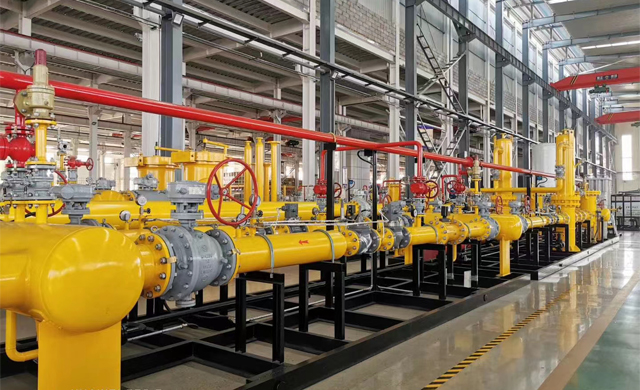
9 月 . 05, 2024 19:39
Back to list
Pressure Reducing Regulators | Efficient Pressure Control Solutions
Pressure reducing regulators are essential devices used in various industries to control and manage gas or liquid pressure within a specified range. They play a crucial role in ensuring safety, efficiency, and reliability in systems where pressure needs to be regulated, such as in gas distribution networks, HVAC systems, and industrial manufacturing processes.
At their core, pressure reducing regulators function by taking high-pressure input from a source and reducing it to a lower, more usable output pressure. This reduction helps protect equipment and ensures that processes operate smoothly without fluctuations that could lead to equipment failure or safety hazards. The functioning of these regulators is based on principles of fluid mechanics and thermodynamics, making them vital in applications involving gases like natural gas, propane, or various industrial gases, as well as liquids in diverse contexts.
One of the primary components of a pressure reducing regulator is the pressure sensing mechanism, often composed of a diaphragm or a spring-loaded valve. When the inlet pressure exceeds the setpoint of the regulator, the sensing element reacts to this change, causing the valve to close and thereby reducing the output pressure. Conversely, when the downstream pressure drops, the valve opens to allow more inflow, maintaining the desired pressure level. This feedback loop is critical in ensuring consistent pressure delivery, especially in complex systems with varying demand.
The design of pressure reducing regulators can vary significantly based on their intended application. For instance, some regulators are designed for high-capacity applications, while others may be more suitable for low-flow, high-precision scenarios. Additionally, materials used in construction, such as stainless steel or plastic composites, are chosen based on factors like pressure rating, media compatibility, and environmental conditions.
pressure reducing regulators

In industries such as healthcare, pressure regulators are crucial for supplying gases like oxygen and nitrous oxide for medical use. These devices must meet stringent safety standards to prevent over-pressurization, which could pose serious risks to patients. Similarly, in the energy sector, pressure reducing regulators play a key role in natural gas transmission systems, ensuring that gas is delivered at safe and usable pressures to homes and businesses.
Regular maintenance and calibration of pressure reducing regulators are vital to ensure their efficient operation. This includes checking for leaks, inspecting components for wear or corrosion, and verifying the accuracy of the pressure settings. Failure to maintain these devices can lead to serious consequences, such as equipment damage or hazardous incidents.
In summary, pressure reducing regulators are indispensable components in a wide range of applications, enhancing safety, efficiency, and performance. By carefully controlling pressure levels, these regulators help prevent accidents and ensure that systems operate within optimal parameters. As technology continues to advance, the development of more efficient and reliable pressure reducing regulators will likely play an increasingly important role in industries worldwide, addressing the growing demand for safe and efficient pressure management solutions.
Next:
Latest news
-
Unlocking The Quality Gas Pressure ReducersNewsNov.01,2024
-
The Role of Gas Pressure Reducing StationsNewsNov.01,2024
-
The Importance and Functionality of Safety Relief ValvesNewsNov.01,2024
-
The Essential Role of Safety Valves in Natural Gas ApplicationsNewsNov.01,2024
-
The Essential Role of Gas Pressure RegulatorsNewsNov.01,2024
-
Enhance Your Premium Gas FiltersNewsNov.01,2024

